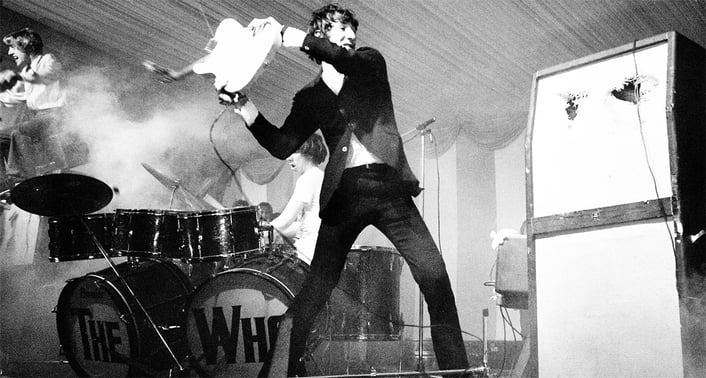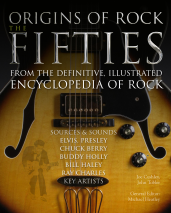
70s music legend Pete Townshend has never shied away from the rock and roll limelight. His rough and ready rock attitude coupled with his killer guitar riffs and smashing stage presence, surely make him a contender for the best rock guitarist ever!
Bohemian Beginnings
Pete Townshend was born in Chiswick, London to a musical family. Pete’s grandfather was a musician, his father a dance-band saxophonist and his mother a singer. Consequently, a career in music seemed natural for Pete, and his parents encouraged him. His first instrument was a banjo, which he played as a teenager in Dixieland outfit The Confederates with school friend John Entwistle. After leaving school Townshend attended Ealing Art College, where the bohemian atmosphere and emphasis on the exploration of new ideas left an indelible imprint on him. Townshend switched to guitar aged 12 and joined bassist Entwistle and lead singer Roger Daltrey in a rhythm and blues group The Detours. With the recruitment of drummer Keith Moon, the classic Who line-up was complete.A Guitar-smashing Act
Townshend’s reputation as a destroyer of guitars began by accident in September 1964, when he broke the neck of his guitar on the low ceiling of the Railway Tavern in Harrow, and then smashed the rest of it in frustration. The routine soon became part of the act. The other aspects of Townshend’s physical approach – the windmilling arm, assaults on the strings and leaps into the air – Townshend claimed to have developed to hide the fact that he could not play the blues properly.

The Who’s unique sound was unleashed on their 1965 Kinks-influenced debut single ‘I Can’t Explain’. The song’s signature riff would be widely imitated. The second single, ‘Anyway, Anyhow, Anywhere,’ featured the innovative use of feedback, as Townshend nailed down the rhythm and Moon fired out short drum solos. The Who’s first album My Generation (1965) was a mix of rhythm and blues and pop, while the follow-up A Quick One (1966) was significant in that it contained in the title track Townshend’s first conceptual piece.
The Who were established as one of the Seventies’ major rock bands, and they consolidated their position with the acclaimed Who’s Next (1971) and a second rock opera Quadrophenia (1973), which looked back to the band’s mod roots.
Solo Rocker
 In between, Townshend made his first solo album, Who Came First (1972). Townshend pursued a parallel solo career, achieving notable success with Empty Glass (1980). In 1983 he declared that The Who were finished, although they reunited for occasional live performances, including Live Aid, during the Eighties. Since 1996, Townshend has worked with various incarnations of the band, a practice that continued after the death of Entwistle in 2002. With Daltry, Townshend made the first new album in 24 years, Endless Wire (2006). The Who continued to perform crtically acclaimed sets in the 21st century, including Live 8 (2005), Glastonbury Festival (2007), and the 2010 Super Bowl halftime show.
In between, Townshend made his first solo album, Who Came First (1972). Townshend pursued a parallel solo career, achieving notable success with Empty Glass (1980). In 1983 he declared that The Who were finished, although they reunited for occasional live performances, including Live Aid, during the Eighties. Since 1996, Townshend has worked with various incarnations of the band, a practice that continued after the death of Entwistle in 2002. With Daltry, Townshend made the first new album in 24 years, Endless Wire (2006). The Who continued to perform crtically acclaimed sets in the 21st century, including Live 8 (2005), Glastonbury Festival (2007), and the 2010 Super Bowl halftime show.
A prime example of Townshend’s powerful strumming is the intro to ‘Pinball Wizard’. In the Who’s early days he played an Emile Grimshaw SS Deluxe, plus 6- and 12-string Rickenbackers. He began using Fender Stratocasters and Telecasters, as these were less expensive to replace. Since the late Eighties he has preferred the Fender Eric Clapton Stratocaster to his own signature model.
Links
-
Check out this YouTube page dedicated to Pete Townshend here
-
For all of Pete Townshend's latest information head here
-
Interested in music? Check out @FlameTreeMusic on Twitter here
-
Links to other posts in this series can be found here





